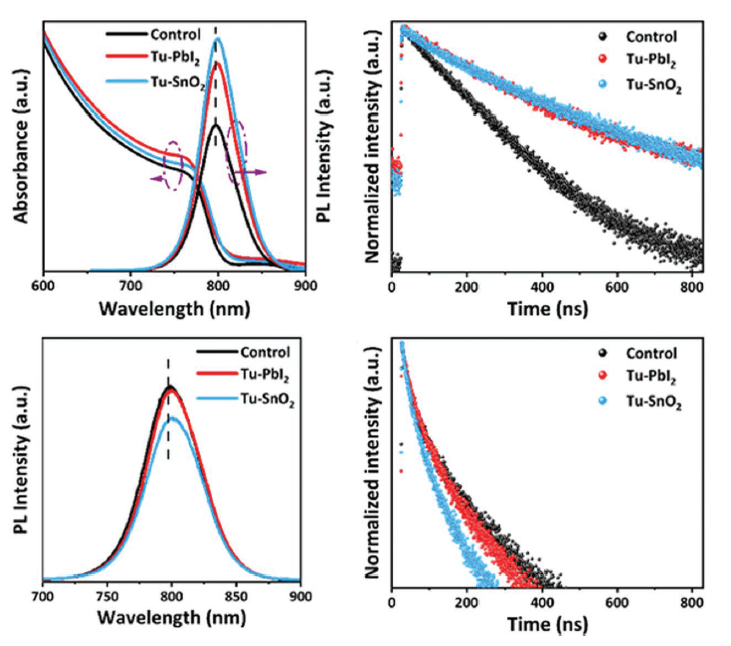A Thiourea Competitive Crystallization Strategy for FA-Based Perovskite Solar Cells
Sun, Q., Tuo, B., Ren, Z., Xue, T., Zhang, Y., Ma, J., Li, P., Song, Y.
Adv. Funct. Mater. 2022, 2208885.
doi.org/10.1002/adfm.202208885
Yanlin Song and colleagues at the Chinese Academy of Sciences embedded TU as a dopant in PbI2 and they used it as interface treatment at the SnO2/perovskite interface. Devices with either of the two treatments presented larger grains, and lower defect concentration. The treatment released tensile stress in the #perovskite by reducing the interface lattice mismatch at the SnO2/perovskite heterojunction. The champion solar cell reached a PCE of 24.4% and retained 80% of the initial efficiency after 120 hours of stressing at 60°C in N2.
Transient photocurrent (TPC), transient photovoltage (TPV), and space-charge limited current (SCLC) were performed with Paios from FLUXiM AG. These experiments confirmed the improvement in charge carrier transport and reduction in recombination thanks to the reduced defect concentration.

